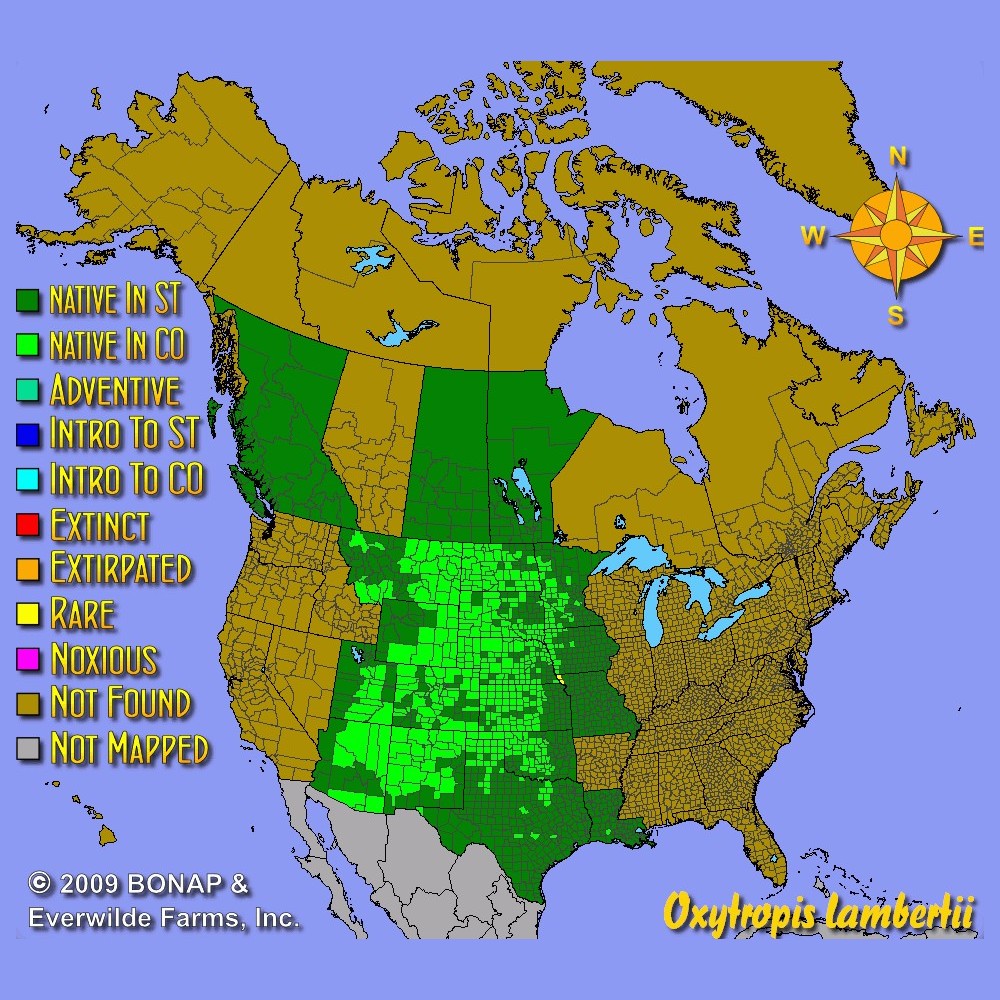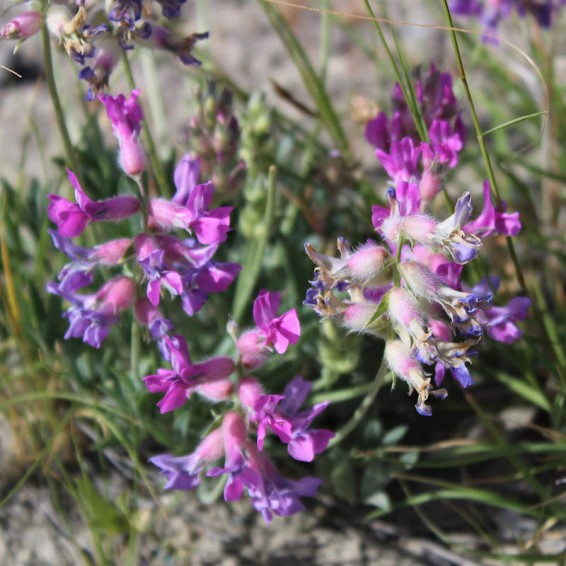Purple Locoweed Seeds
- HOW TO GROW
- FAST FACTS
- REVIEWS
HOW TO GROW
Sowing: Direct sow in early spring, planting the seed just below the surface of the soil. Keep the soil lightly moist until germination. Since these plants do not like having their roots disturbed, do not attempt to move the seedlings. For an early start, start the seed in peat pots 6-8 weeks before the last frost and carefully plant outdoors.
Growing: Water seedlings occasionally until they become established. Mature plants tolerate drought well and grow well in dry or sandy soil, though they also flourish in average soil. Too much moisture, especially over the winter, will harm this plant. Keep in mind that this plant resents having its roots disturbed, and is best left alone once established. In good growing conditions, it may spread by rhizomes to form a colony. This plant is highly attractive to monarch butterflies as well as other butterflies, hummingbirds, and song birds. Because of its potential toxicity, do not establish this plant in pastures or other areas in close proximity to grazing animals.
Harvesting: For fresh flowers, choose stalks that have reached full bloom. Strip away the foliage that will fall below the water level, and place in water immediately.
Seed Saving: After flowering, small pods will develop. Eventually the pods will turn brown, split open at the side, and drop their seed. Collect the pods as soon as they begin to turn brown, making sure the seed inside has ripened to a brown color. After the pods have dried completely, remove the seed. Store the seed in a cool, dark place.
FAST FACTS
Common Names: Lambert's Crazyweed
Latin Name: Oxytropis lambertii
Species Origin: US Native Wildflower
Type: Native Wildflowers
Life Cycle: Perennial
USDA Zones: 3, 4, 5, 6, 7, 8, 9
US Regions: Mountain, Arid/Desert, Plains/Texas
Seeds per Ounce: 12,500
Stratification: No Stratification
Germination Ease: No Stratification
Sunlight: Full Sun
Height: 10 Inches
Color: Pink, Purple
Bloom Season: Blooms Early Spring, Blooms Late Spring
Beautiful packaging & quality seeds
The packaging for these seeds is so nice its beyond description. I wish everyone packaged their seeds like this. Quantity and quality were also fantastic. I'm going to be a lifelong customer!
DESCRIPTION

HOW TO GROW
Sowing: Direct sow in early spring, planting the seed just below the surface of the soil. Keep the soil lightly moist until germination. Since these plants do not like having their roots disturbed, do not attempt to move the seedlings. For an early start, start the seed in peat pots 6-8 weeks before the last frost and carefully plant outdoors.
Growing: Water seedlings occasionally until they become established. Mature plants tolerate drought well and grow well in dry or sandy soil, though they also flourish in average soil. Too much moisture, especially over the winter, will harm this plant. Keep in mind that this plant resents having its roots disturbed, and is best left alone once established. In good growing conditions, it may spread by rhizomes to form a colony. This plant is highly attractive to monarch butterflies as well as other butterflies, hummingbirds, and song birds. Because of its potential toxicity, do not establish this plant in pastures or other areas in close proximity to grazing animals.
Harvesting: For fresh flowers, choose stalks that have reached full bloom. Strip away the foliage that will fall below the water level, and place in water immediately.
Seed Saving: After flowering, small pods will develop. Eventually the pods will turn brown, split open at the side, and drop their seed. Collect the pods as soon as they begin to turn brown, making sure the seed inside has ripened to a brown color. After the pods have dried completely, remove the seed. Store the seed in a cool, dark place.
FAST FACTS
Common Names: Lambert's Crazyweed
Latin Name: Oxytropis lambertii
Species Origin: US Native Wildflower
Type: Native Wildflowers
Life Cycle: Perennial
USDA Zones: 3, 4, 5, 6, 7, 8, 9
US Regions: Mountain, Arid/Desert, Plains/Texas
Seeds per Ounce: 12,500
Stratification: No Stratification
Germination Ease: No Stratification
Sunlight: Full Sun
Height: 10 Inches
Color: Pink, Purple
Bloom Season: Blooms Early Spring, Blooms Late Spring
Reviews
Review
Beautiful packaging & quality seeds
The packaging for these seeds is so nice its beyond description. I wish everyone packaged their seeds like this. Quantity and quality were also fantastic. I'm going to be a lifelong customer!




